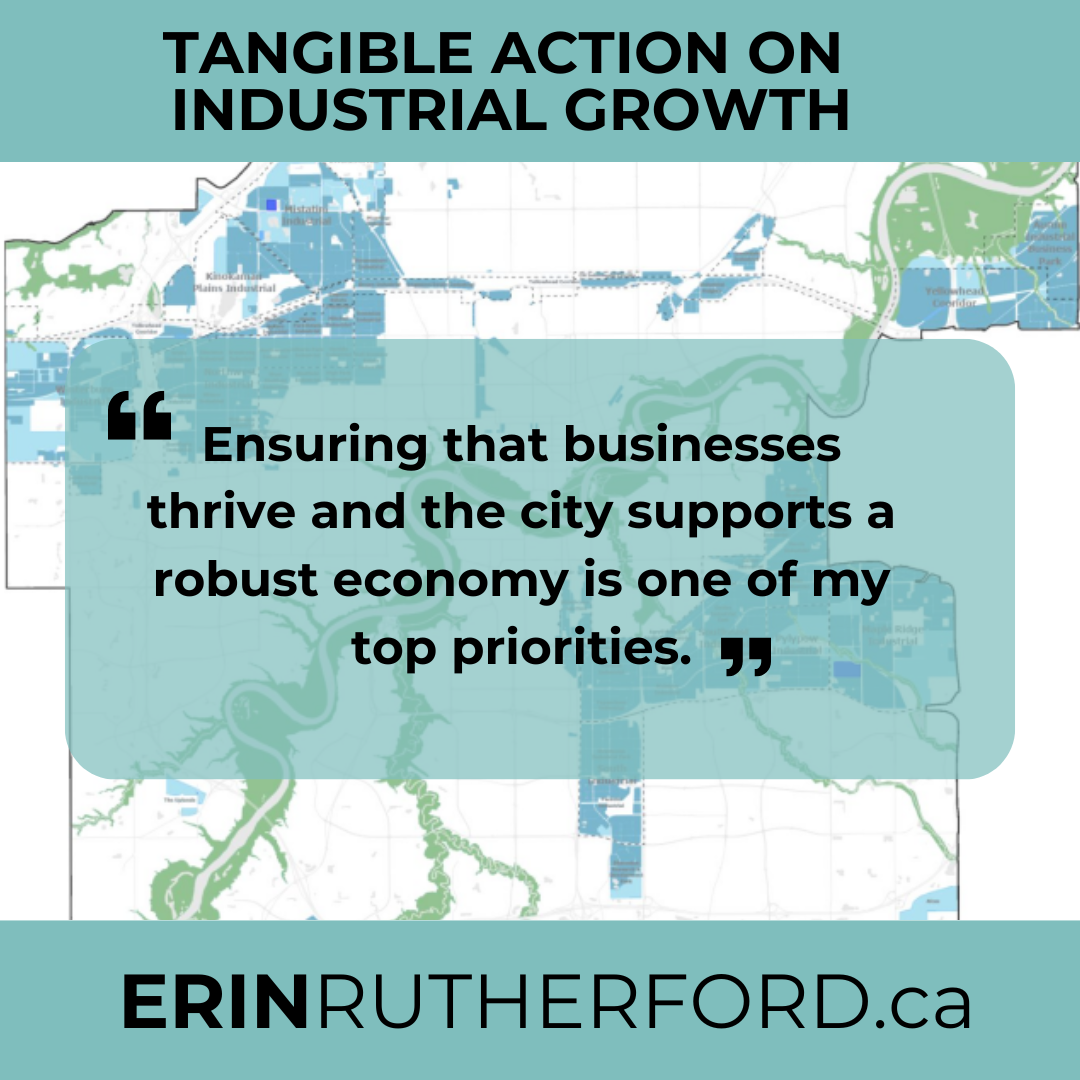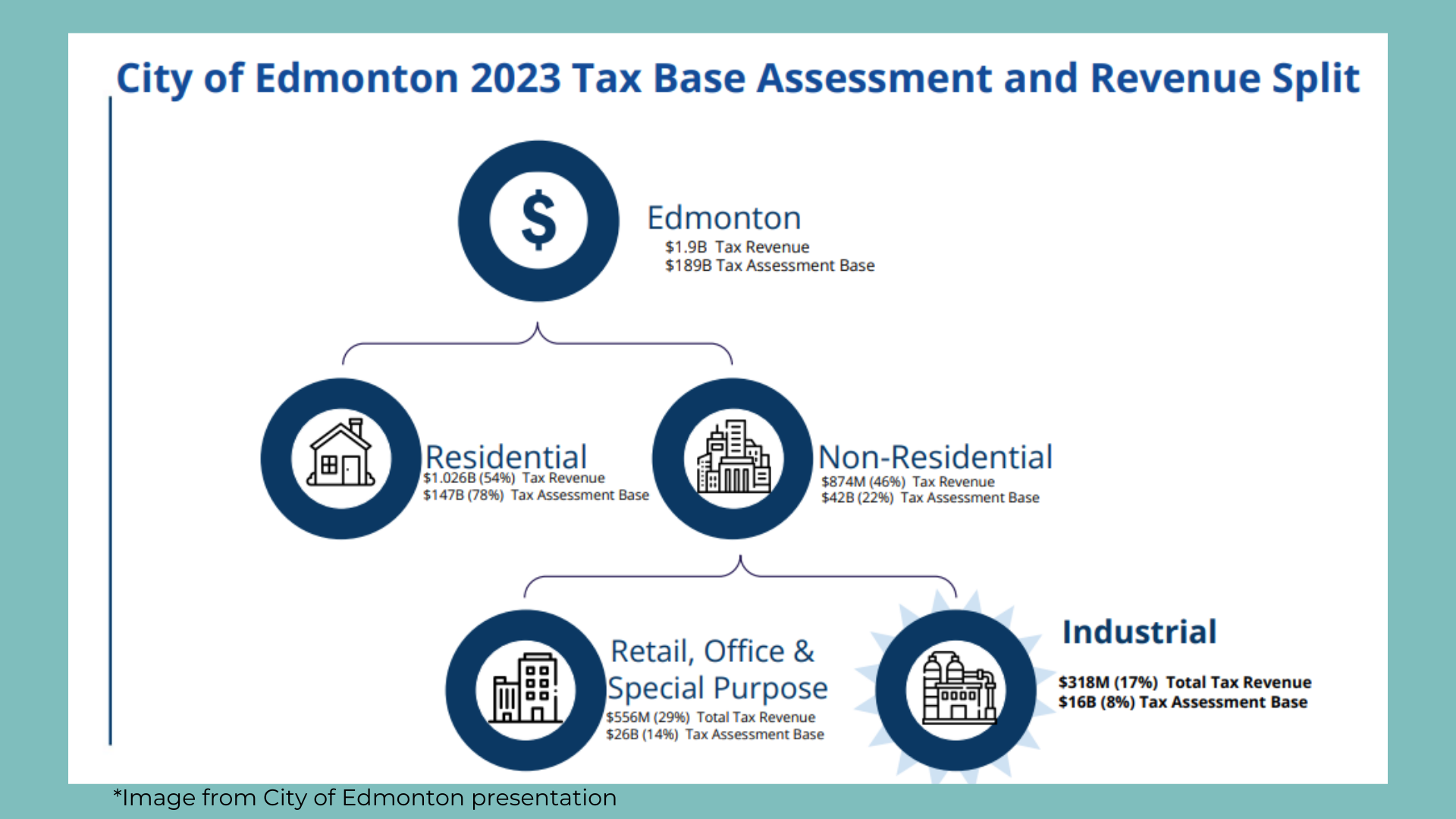Ward Anirniq is home to 16 industrial areas and so many wonderful local businesses. Ensuring that businesses thrive and the city supports a robust economy is one of my top priorities.
In this blog, I’m going to focus on how the city is focused on growing our business and industrial areas.
What is the current challenge?
The non-residential tax base proportionally pays more in taxes than the residential tax-base and is crucial because it helps provide services to everyone. The reality is that Edmonton’s non-residential tax base has been slowly declining since 2008. The decline over the past 15+ years has meant that Edmonton has fewer non-residential taxpayers to divide the tax-levy among, and therefore non-residential AND residential taxpayers are paying more.

